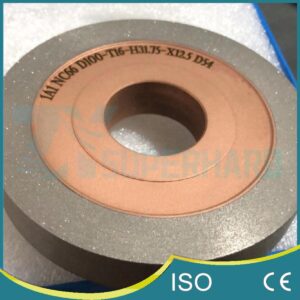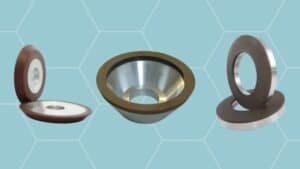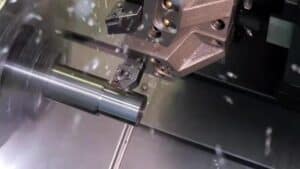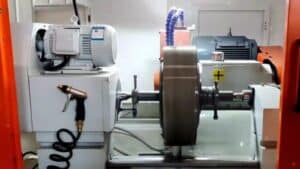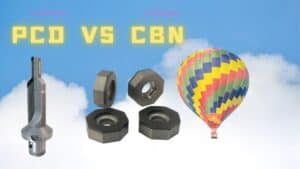If you’re looking to improve your grinding process, it’s important to choose the right diamond grinding wheel. There are a few factors to keep in mind when selecting, including the type of material you’re working with and the desired finish. Here are six tips to help you choose the right diamond grinding wheel for your process.
1. Define The Purpose Of The Grinding Wheel
The first step before choosing a diamond grinding wheel is to define the purpose of the wheel. Do you need it for cutting, shaping, or polishing? A cutting wheel is used to cut through materials such as concrete and tiles, while a shaping wheel is used to shape them into desired shapes. On the other hand, a polishing wheel can be used to give the surface a smooth and shiny finish. Each of these wheels has different purposes and requires different types of diamond grits to operate optimally.
2. Consider The Type Of Material You Want To Process
When selecting a diamond grinding wheel, it is important to consider the type of material you want to process. Different materials require different types of grinding wheels to achieve the best results. For example, harder materials such as concrete may require a more aggressive diamond grinding wheel due to its higher abrasion rate and increased cutting power. Softer materials such as marble may require a softer diamond grinding wheel to prevent damage or scratching of the material. Knowing what type of material you want to process is essential in choosing the right diamond grinding wheel for your project.

3. Select The Right Bond For Your Needs
The bond of a diamond grinding wheel is an important factor to consider when selecting the right wheel for your needs. Bond refers to the material used to attach the diamonds or abrasive grains to the wheel’s surface, which can be made of resin, metal, or vitrified bonds. Each type of bond has its advantages and disadvantages depending on the materials, grinding speed, and other parameters.
Resin bonds are typically made of synthetic resins such as phenolic or urea-formaldehyde and provide a softer bond that helps absorb vibrations for smoother cutting. They also tend to cut faster than metal or vitrified bonds, making them well-suited for high-speed operations. However, they are not as durable and can wear down faster than other bonds.
Metal bonds are made of metal alloys such as steel or cobalt and have higher strength and durability. The harder bond allows for more aggressive grinding, making them well-suited for materials that require greater cutting force. They also retain their shape better than resin bonds but do not absorb vibrations as well.
Vitrified bonds are made of a combination of both metal and ceramic materials and offer the highest degree of strength and durability. They are also more resistant to heat than other types of bonds, making them ideal for grinding hard materials that generate significant heat during the grinding process. However, they tend to be more expensive and are not as good at absorbing vibrations.
Understanding the differences between resin, metal, and vitrified bonds allows you to select the right one for your specific grinding needs. Choose the bond that will provide the best combination of cutting speed, durability, heat resistance, vibration absorption, and cost. This will help ensure that you use the most appropriate grinding wheel for your application.
4. Choose The Right Abrasive For Your Application
You have several choices when selecting the right abrasive for your diamond grinding wheel. Diamond is the hardest and most durable of all the abrasives, while CBN (Cubic Boron Nitride) is the second hardest and also very long-lasting. Both are great options depending on the application.
Diamond abrasive is ideal for grinding and cutting hard materials such as tungsten carbide, ceramic, glass, and steel. Diamond abrasives can also be used to grind softer materials like aluminum, brass, bronze, and plastics. They are especially effective when sharp edges are needed.
CBN (Cubic Boron Nitride) is an excellent choice for grinding and finishing hardened steel, alloy, and tool steels. It is also used to grind cast iron and ferrous metals. CBN abrasive offers superior heat resistance, reducing thermal damage risk in high-speed applications.
By choosing the right abrasive for your application, you can achieve optimal results in diamond grinding wheel performance. Whether you choose diamond or CBN, ensure the abrasive matches your material and application requirements.
5. Determine The Correct Wheel Size
Larger wheels are better suited for larger, heavier jobs, and smaller wheels are for more delicate work. The diameter of the wheel should be proportional to the size of the workpiece being ground and its thickness. Be sure to read the manufacturer’s recommendations for wheel size to ensure that you are selecting the best diamond grinding wheel for your needs. For heavier jobs, it may be beneficial to choose more than one wheel size to get the job done efficiently.
6. Consider The Wheel’s Speed And Operating Conditions
When selecting the right grinding wheel for your application, it’s important to keep in mind that different wheels are designed for different speeds and operating conditions. If you choose a wheel that is too slow or too fast for the operating conditions of your process, it may cause excessive damage to the diamond bonding material and reduce its effectiveness. It’s important to select a wheel that will work within the parameters of your process. Sometimes, you may need to experiment with different wheels to find the best one for your application. Always ensure that you follow proper safety protocols when working with grinding wheels and ensure that your process’s speed and operating conditions are compatible with the wheel you choose. Doing so will help to ensure maximum performance and efficiency.

Conclusion
Selecting the right diamond grinding wheel for your application can be a daunting task. However, by understanding the differences between different bonds, abrasives, and wheel sizes, you can make an informed decision that will give you the best results possible. Be sure to consider your process’s speed and operating conditions when selecting a wheel, as this is an important factor to consider. With the right diamond grinding wheel, you can achieve optimal results and get the job done efficiently and safely. Following these tips, you can find the best diamond grinding wheel for your needs.
If you still have questions, contact us, and we will give you professional advice.



